 January 2015 Tank of the Month
January 2015 Tank of the Month
January 2015 Tank of the Month
Alex Costa's (Alex Costa) 200 US-gallon Reef Aquarium
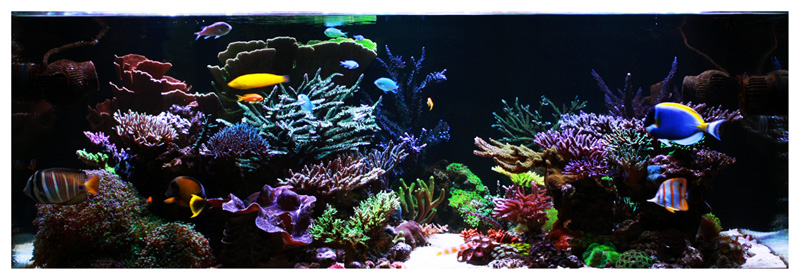 |
Introduction
Being nominated for Tank of the Month, between so many truly amazing systems, is a honor that was truly unexpected. I have been, for the most part, a silent reader on Reef Central since 2009 because I usually feel that I have much more to learn than to teach. My name is Alex Costa, aka Alex Costa (no imagination on my username, sorry) and I’m a Brazilian reefer who lives in Itupeva city.
Background
A bowl of glass with several gold fish inside is my remotest memory of fish keeping. I was five or six years old and my father took the family on a Sunday ride to an outdoor fish store close to our home. That was enough to instil on me the taste for fish tanks.
Years later, at age of 15, I used one of my first paychecks to buy my first full setup, a 5 gallon freshwater tank that was replaced some years later for my first saltwater tank. The lack of knowledge led me to have little success on keeping it as a reef tank and I turned it to a FOWLR. In 2009 a crack on the bottom glass was the sole factor to lead me on starting a new setup. This time the help of internet forums turned the dream of keeping a reef tank possible into reality. I first started with a 50 gallon tank that lasted for a year and then upgraded it to my current system consisting of the 200 gallon display tank. The overall layout was inspired by Ed Reef Shallow Crest tank, but was made a little bit taller.
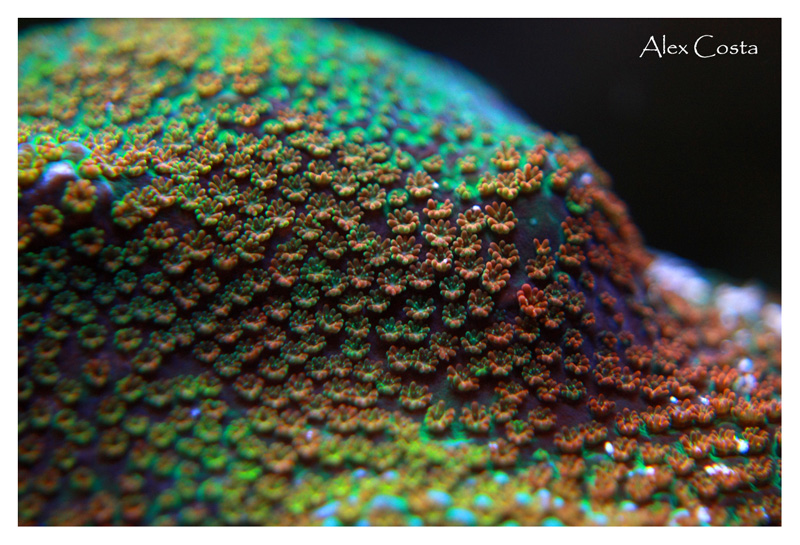 |
System Profile
• Main Display: 200 gallon custom made tank with external overflow box - 60”L X 40”W X 22”H
• Stand: The stand was custom made by my father in law with solid wood.
• Sump: 40 gallon tank on the balcony of the house
• Lighting: x6 VEGA Color in the main display and a RapidLED SOL kit on frag tank
• Filtration: Super Reef Octopus INT 5000 Skimmer
• Return Pump: Reef Octopus Water Blaster 7000
• Water Circulation: Vortech MP40 running on Reef Crest mode, x2 Jebao WP 40 running on Continuous mode
• Calcium Reactor: Super Reef Octopus SRO-5000 dual chamber filled with TwoLittleFishes media. The second chamber is filled the same with the adittion of 1Kg of Magnesium media from Brightwell Aquatics
• Other Equipment: American Pinpoint PH Monitor • 4 x Two Little Fishes phosban 150 reactor
• Auto top off System: Aqua FX float valve plumbed on a 5 stages RO/DI filled with 4 liters of Puritech MB478 resin)
• Heating & Cooling: Two Finnex 500W titanium heater controlled by a COEL TLZ12, and a 3/4HP chiller by Gelaqua
Current System
The system started with the objective of achieving a harmonic tank. To do this my plan was to mix softies, LPS, and SPS corals with invertebrates and a limited and selected group of fish with different personalities and habits.
The basic idea was to do a tank/layout which gives to the observer a sense of depth. So two islands were set up on each side of the tank. It was staged so it is lower in the front where the zoanthids, softies, LPS and clams lie, and is higher in the back with a lot of plateaus and cliffs to accommodate the sps corals. The middle of the tank is intended to be empty, leaving the sandbed, a 1” decorative layer of samoa pink #1, exposed creating a negative space and a lot of room for fish swimming. Over the years, with the growth of sps corals, that negative space I've come to enjoy at first is now missed.
Being a mixed reef tank the main difficulty was always to provide a sufficient low nutrient system for the SPS to thrive but at the same time, keeping the soft and the LPS well fed. So it had a period where the soft corals have been great, but the color with the SPS corals have been dull, and also a period when the SPS corals have been astonishing, but the softies have been struggling.
Another general practice of the system was bacterial dosing. I’ve used Microbacter, Zeobac, and Biodigest until it became Special Blend. The tank has always run under some probiotic method fed initially by Brightwell Biofuel and then by biopellets. Vodka has never been a long term option due to the STN that has caused on sps each time that I’ve tried it.
The parameters are stabily maintained by a huge Calcium reactor, which is with no doubt, one of my best acquisitions among the skimmer and the LED fixtures. I credit a good part of my success to these three equipment, combined with a good random flow and an efficient nutrient export system.
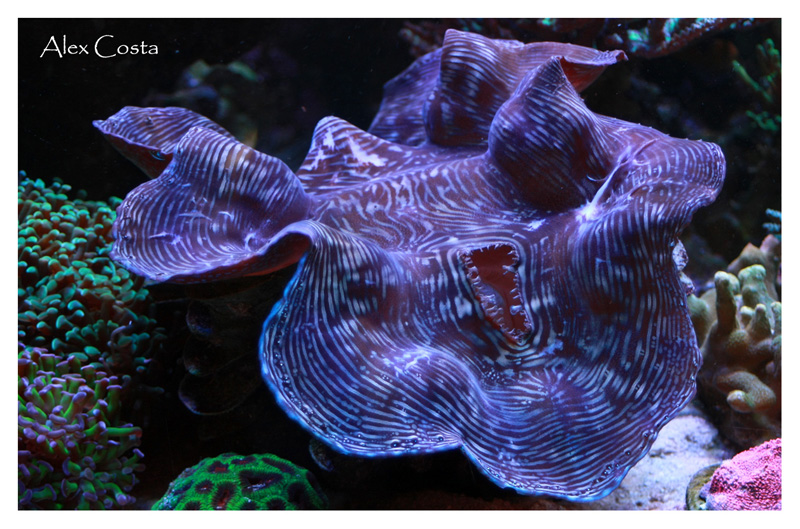 |
Lighting
Finding the correct lighting for the system was not an easy project. The 60 inch length was too long for 54W bulbs and too short for 80W bulbs. Plus, the 40 inch wide fixture demands 14~16 bulb to achieve a good coverage.
The first light system was based on ATI Blue Plus T5 bulbs (80W), mixed with Phillips Aquaviva and KZ Fiji purple T5 bubs (54W) running under a pack of IceCap ballasts, due to the success accomplished by a friend with this kind of mix on his tank. After the first year, and 3 defective ballasts, I changed to a 16 T5 bulb system with only ATI 54W. It consisted of mixed Aquablue, Blue Plus and Purple Plus running under a pack of Phillips ballasts. This system gave me very good results in color and growing, but changing 16 bulbs every 8~10 months in Brazil, a place where you simply can’t find good T5 bulbs at a reasonable value, was a big problem.
All of this led me to change to a LED based lighting system in December 2012. During 2012, I made a vast research endevor to learn about LED fixtures and the systems that were running it. A LOT of bad reviews, complaints, and back to T5/MH histories are out there, but some good experiences too. I finally decided to give it a shot with AI VEGA Color fixtures which provide good coverage, a good color spectrum, easy control, flexibility and a fair price.
The 6 fixtures lie 10 inches above the water line running blues/purples at 100% of power, whites varying between 80~100%, and reds and greens at 70%. The lights cycle has 12 hours of duration starting at 8:00AM and ending at 8:00PM with an 1 hour ramp in rise and dusk.
|
Water Parameters:
|
Filtration
Since day one, I have run a Super Reef Octopus 5000 as the core of my filtration system. No complains about it. This allows me to keep a low nutrient system even with the heavy fish feeding routine that I use to keep fish healthy, fat and happy.
Since 2011, about a liter of Brightwell biopellets have been running on two TLF 150 reactors. This, along with the skimmer, keeps the nutrient level low enough to give the sps corals colors a pop. Two more Phosban reactors run GFO (Po4X4) and GAC (Carbonit). The Po4X4 keeps the phosphate/silicate level low enough to keep the Cyanobacteria away from the tank and the sandbed cleaned from diatoms.
No socks/mesh are used due to my laziness. Its difficult keeping it cleaned or changing it every week.
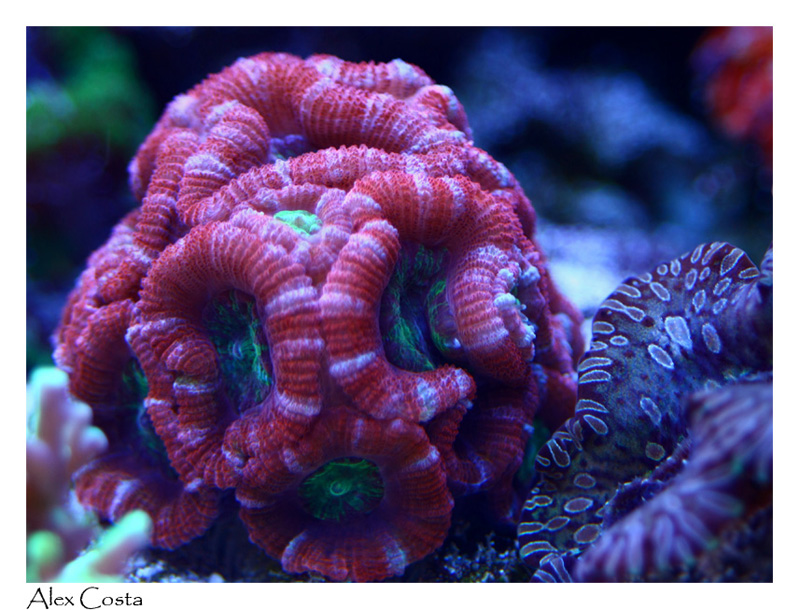 |
Water Circulation & Flow
A Water Blaster 7000 by Octopus is used for the water return from the sump but the outflow is divided into seven. This pump runs the main display, the chiller, the return of the frag tank, and four media reactors. So the return is about 1000~1500 liters/hour.
The circulation, on the other hand, started with four Koralias EVO 1500 back in 2010 which did their job until the SPS corals started to grow. Then I added two Koralias Magnum 6 and a MP40 Vortech. Nowadays there are two WP 40 Jeba-O, one on each side of the tank and I kept the Vortech on one side and a Koralia Magnum on the other side. The programmable pumps provide random flow and the set of pumps, turning a total of 50 times the volume of the reef, helps to keep the fishes clean from parasites and the sps corals happy.
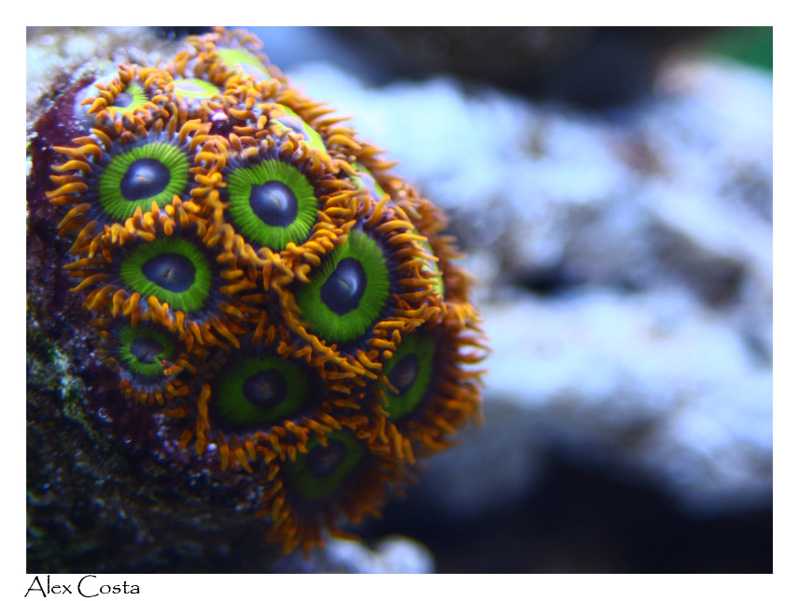 |
Maintenance
I’m definitely not a prime example when it comes to maintenance. The fact is that my real pleasure comes from seeing fish and corals healthy and growing. I do not have the cleanliness or the most organized sump as well as the most regularly controlled parameters. So I do the basics to get the things running smoothly.
• Monthly: Replace GAC and GFO; water changes using HW Reefer salt of 10%; vacuum the bottom of sump and the overflow box. I also used to vacuum the sandbed but I do not do it anymore
• Weekly: Test Reef Aquarium; doses 10 drops of lugol’s, 10ml of Special Blend and 5ml of Vitamarin C
• As needed: Clean the glass; clean the skimmer cup, replace the resins, the membrane, carbon on DI/RO system. An inline TDS meter is used to notify me when to replace the RO membrane and diatoms algae on sandbed is the indicator to replace DI resins. The pumps are soaked in vinegar and washed when the flow begins to be compromised. The skimmer has been washed three or four times since the system has started.
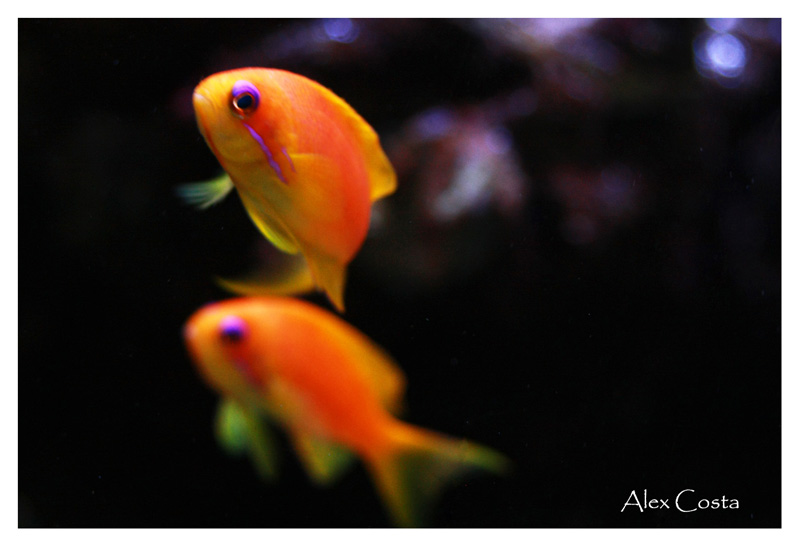 |
Fish & Coral Feeding
The fish are fed two times a day via SERA auto feeder with New Life Spectrum, Tropical D-allio plus, Dr. Bassler Cavar and New Life Thera + A pellets. I feed them nori, blood worms and a cube of frozen shrimp/salmon everyday. Dr. Bassler Flakes, Sera FD Artemia Shrimps and Cyclop-eeze are offered once a week. The LPS and soft corals are fed with the same shrimp/salmon cube and the SPS aren’t fed at all. I’ve noted that the heavy feed of fishes is enough to bring colors to the sps, so I didn’t feed them anymore. I do not turn off the pumps or skimmer during the feeding of corals as well as the feedings made at night, after the lights go off.
Livestock Inhabitants
This is what I have in the system nowadays. Along the years some fish and corals were lost. Remaining fish and coral are what can be identified through photography of my system.
Fish:
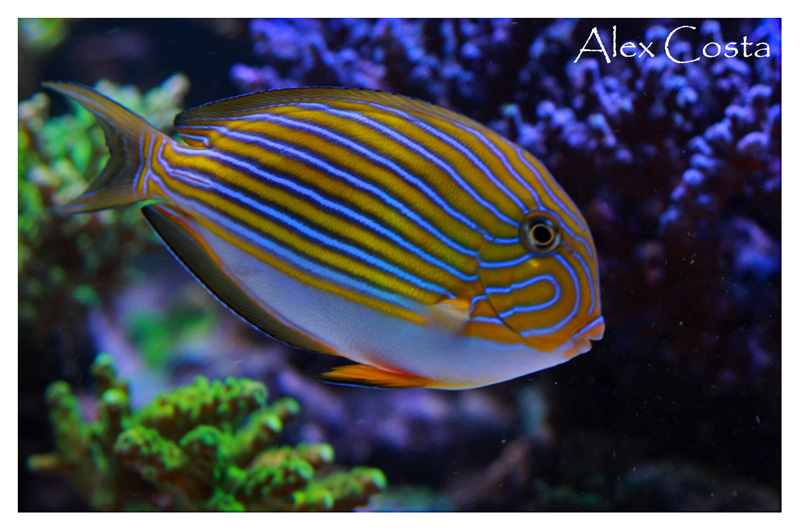 |
Invertebrates:
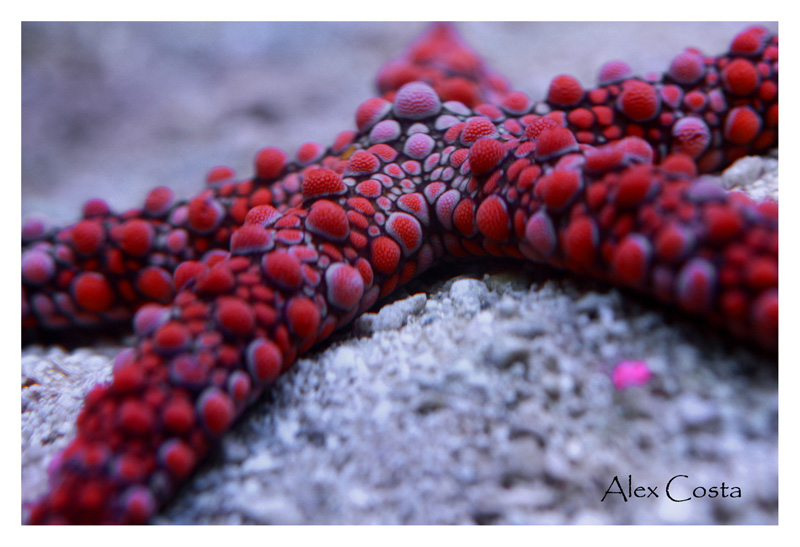 |
|
Corals:
All corals have grown from frags to colonies in this 4 years. No colony was purchased.
SPS:
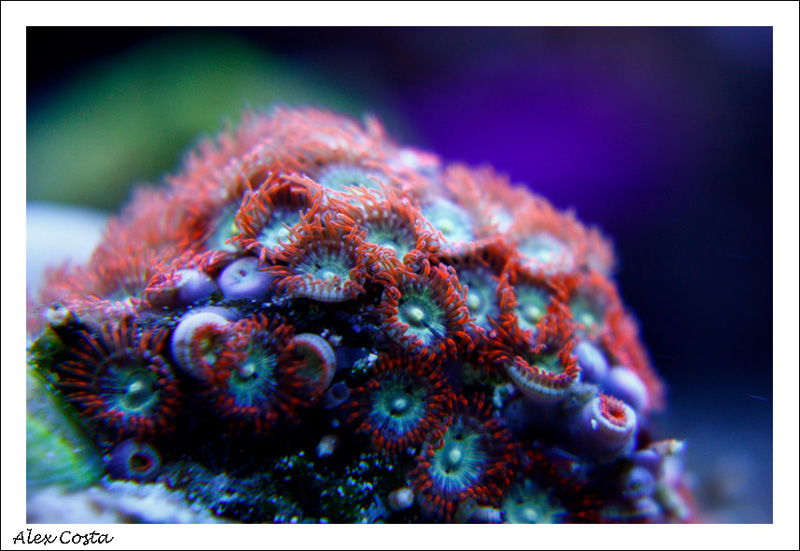 |
LPS:
Softies:
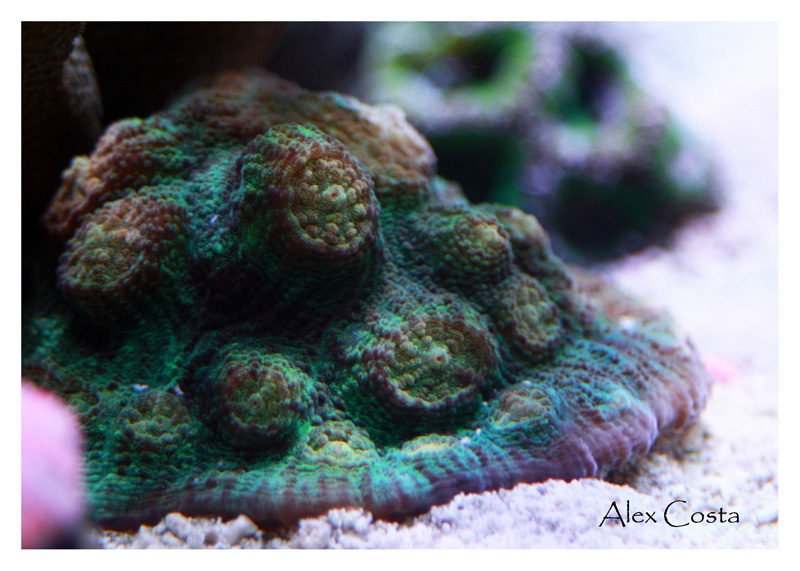 |
Acknowledgement
First, I would like to thank my friend Márcio Hacker. If I had any success on SPS maintenance, I owe it to him. As a time/money demanding hobby, reefkeeping is very hard without the support of the family, so I’d like to thank my wife Clarice and my daughter Gabi. It’s been an excellent ride, girls. Trips are a tense moment in the year, but I always can count on Tami Freire to check the tank and keep the fishes happy. Last but not least, the nomination of the forum reefers was a huge surprise due to fact that I’m not a very participative member of the fórum. Thank you all very much! Finally, thanks to Reefkeeping Magazine for the opportunity of showing to the world a little of Brazil.
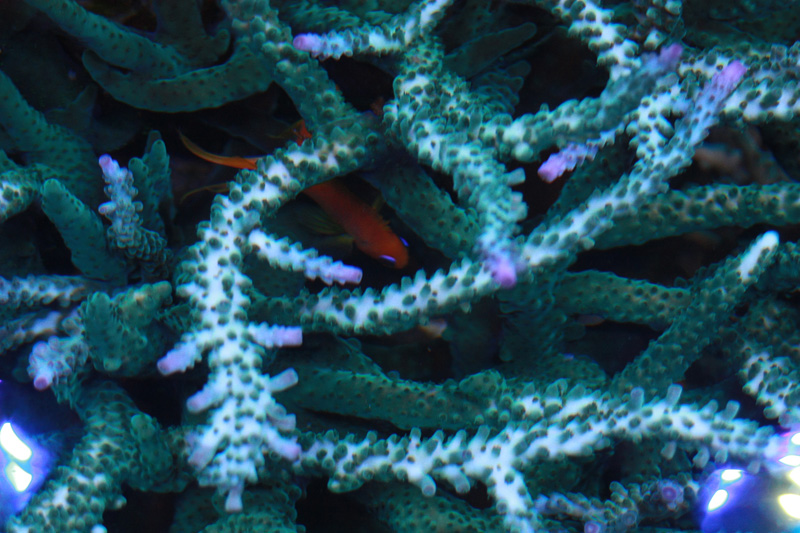 |
Feel free to comment or ask questions about my tank in the Tank of the Month thread on Reef Central.



